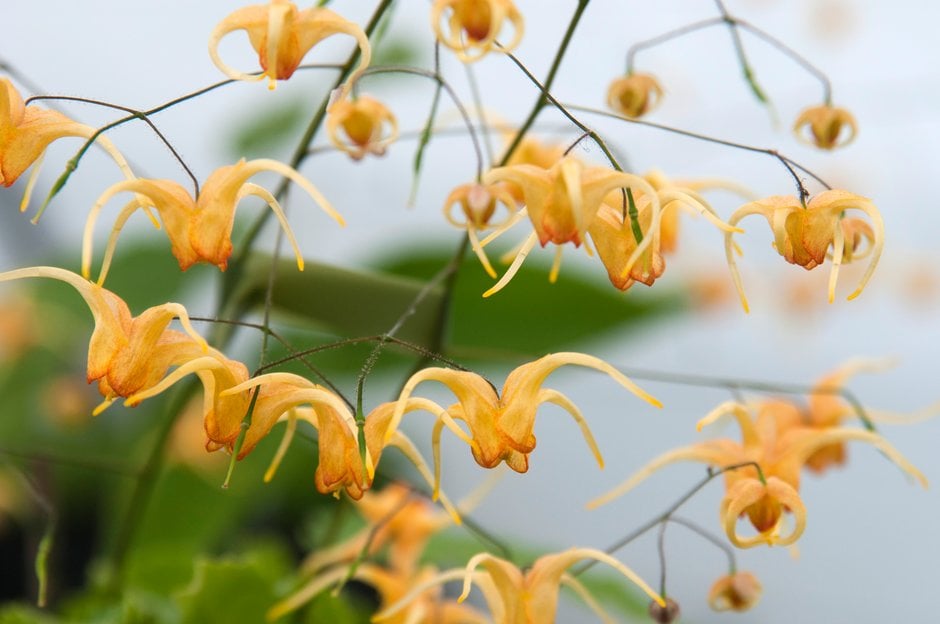Size
Ultimate height
0.1–0.5 metresTime to ultimate height
2–5 yearsUltimate spread
0.1–0.5 metresGrowing conditions
Moisture
Moist but well–drainedpH
Acid, NeutralColour & scent
| Stem | Flower | Foliage | Fruit | |
| Spring | Orange Bronze Yellow | Red Green | ||
|---|---|---|---|---|
| Summer | Green | |||
| Autumn | Green | |||
| Winter | Green |
Position
- Partial shade
Aspect
North–facing or West–facing or East–facing
Exposure
Sheltered Hardiness
H6Botanical details
- Family
- Berberidaceae
- Native to GB / Ireland
- No
- Foliage
- Semi evergreen
- Habit
- Matforming
- Genus
Epimedium are rhizomatous perennials with evergreen or deciduous, ternately or pinnately divided leaves, and open sprays of small, bowl-shaped flowers, often with prominent spurs, in mid to late spring
- Name status
Accepted
How to grow
Cultivation
Grow in fertile, moist but well-drained, humus-rich soil in partial shade; shelter from cold, drying winds
Propagation
Propagate by division in autumn or after flowering
Suggested planting locations and garden types
- City and courtyard gardens
- Cottage and informal garden
- Banks and slopes
- Underplanting of roses and shrubs
- Flower borders and beds
- Ground cover
Pruning
Cut back old foliage in late winter before new flower stems emerge for the best display of new foliage and flowers
Pests
May be susceptible to vine weevil
Diseases
May be affected by a virus
Love gardening
Sign up to receive regular gardening tips, inspiration, offers and more
View our Privacy Policy
Get involved
The Royal Horticultural Society is the UK’s leading gardening charity. We aim to enrich everyone’s life through plants, and make the UK a greener and more beautiful place.
